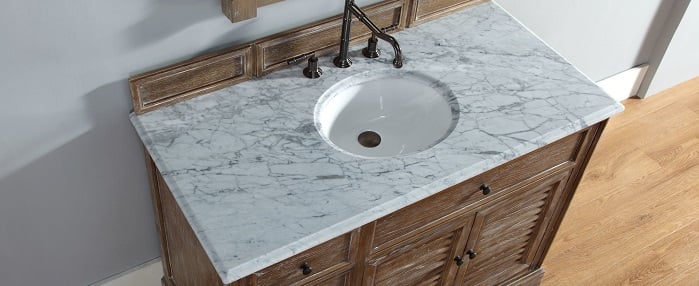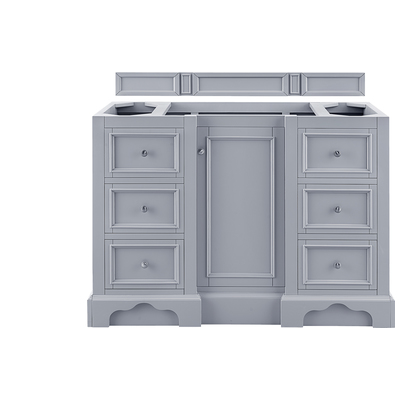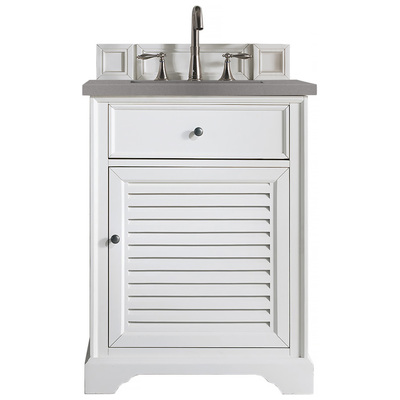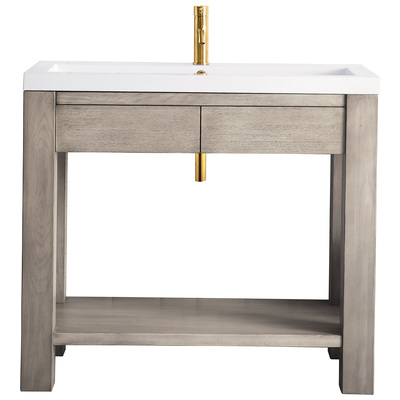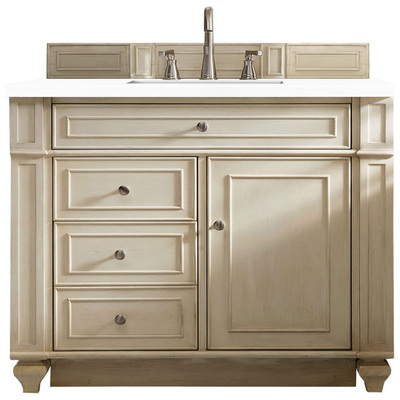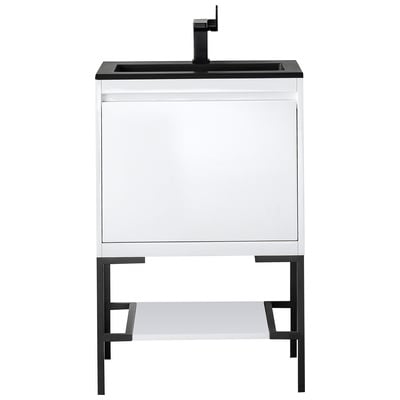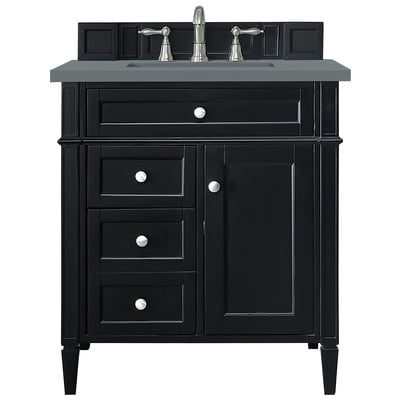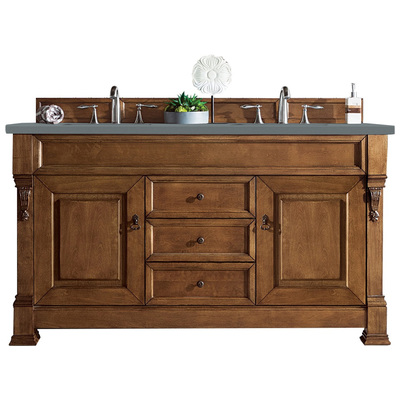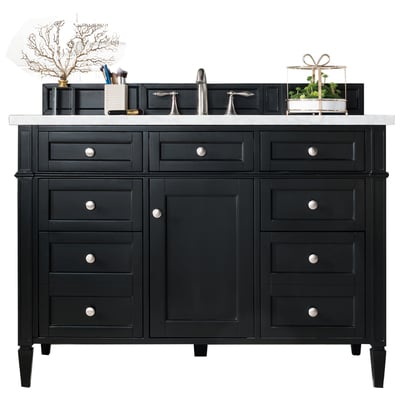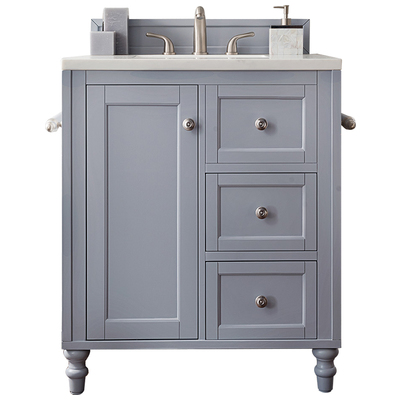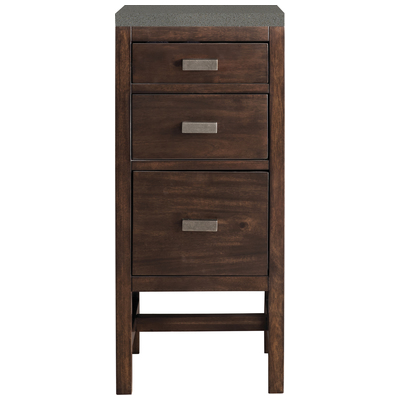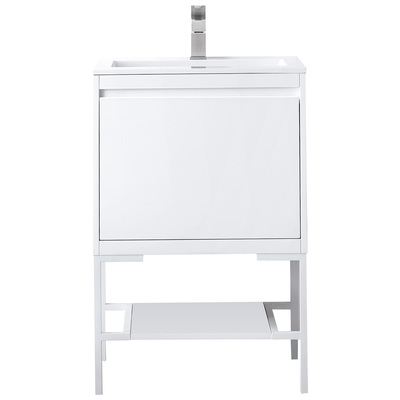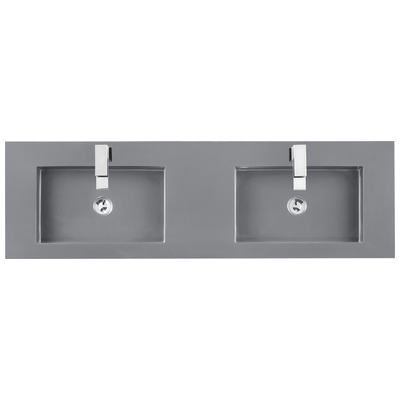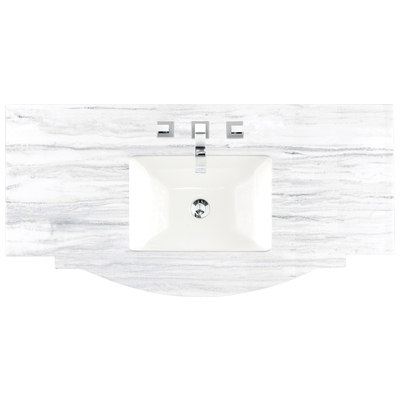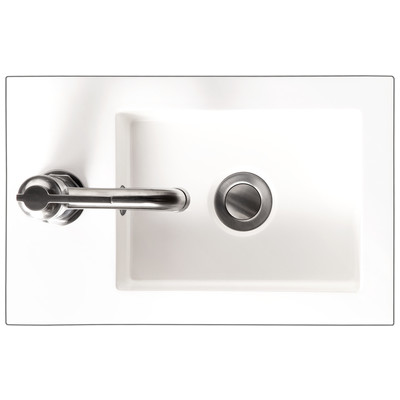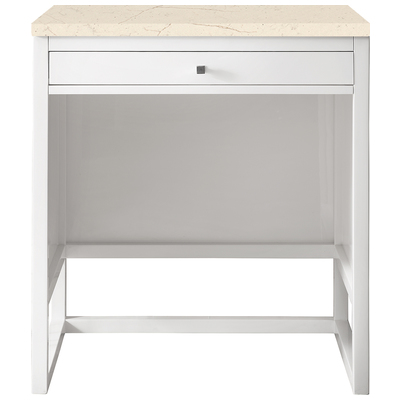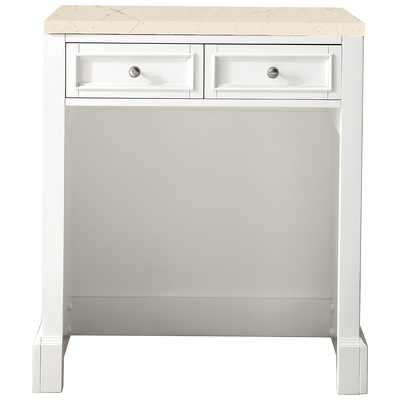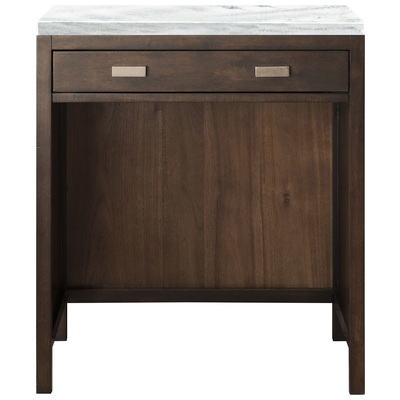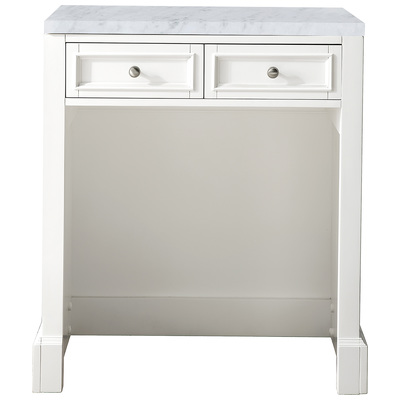Picking out a new bathroom vanity can be a stressful process. But even once you’ve found a look you love with all the storage you want, there’s still one choice left to make: the vanity top. Now, with some pre-made vanities, this isn’t a question at all; the vanity top you get is the one the manufacturer chooses to go with it. But increasingly bathroom vanity designers like James Martin are giving you more say in the matter, letting you decide which of a variety of different pre-cut vanity tops to pair with each of their vanity collections.
A Selection of Vanity Tops For Every Style
Having your choice of vanity tops means having more control over the final look and feel of your vanity. But it also means you need to know more about the available options. On the surface, choosing a vanity top is little more than picking a color that matches your space. But whether they look wildly different or almost identical, different types of stone and man-made alternatives have vastly different qualities. That means different pros-and-cons, and that one might be better than another for your needs, regardless of color.
Natural Stone

Decorating with natural stone has long been a maker of quality and luxury. Very often, vanities that let you choose from a variety of countertops will include at least one natural stone option. Typically, “natural stone” means marble or granite; stone cut from a larger slab of rock and polished down to a smooth surface, without any fillers or man-made additives. Natural stone vanity tops are among the most expensive. Each one is one-of-a-kind, created from naturally occurring mineral deposits. No two will look exactly the same – even ones cut from the same piece of stone. Real stone vanity tops also require much more maintenance and upkeep, because they’re a natural, porous material that’s susceptible to scratching and staining. Both marble and granite are nicely heat resistant (and can stand up to a stray curling iron!), but they need to be regularly cleaned, polished, and sealed to prevent discoloring and keep them looking their best – which can be a big long-term investment.
Engineered Quartz

Quartz countertops have become a popular alternative to marble, granite, and other “natural” stone vanity tops. They offer a solid compromise between quarried stone and totally synthetic alternatives. Rather than solid slabs, these are made from engineered quartz, which consists primarily of natural stone particles bound together and sealed with a small quantity of synthetic polymers. Engineered quartz countertops are sold under a variety of different brand names. Most offer a stone-like look, but at a lower price and with a much higher durability. Quartz countertops are highly heat resistant (and often used in kitchens for this reason!) and extremely hard, which means they won’t scratch or chip. The addition of polymers also means engineered quartz has a non-porous surface, so it won’t stain and doesn’t require the same degree of routine maintenance as natural stone.
Solid Surface

Solid surface countertops lie at the other end of the spectrum. They’re made entirely of polymers and resins, and only occasionally mimic the look of natural stone. More often, solid surface countertops come in a variety of bold and distinctive colors and patterns (as well as the obvious standby neutrals) to help you give your vanity a fun and personalized finish. The biggest advantage of solid surface is that it’s inexpensive, and can be molded into almost any shape. That includes counters with seamlessly integrated sinks. Because they don’t require any natural materials, they’re easy and affordable to make and customize to your space. Like quartz, they’re also non-porous; while they’re a little more prone to discoloration, they’re much easier than natural stone to clean up and refinish. The drawback? Solid surface countertops are a bit softer than quartz and more likely to scratch (though again simple to resurface). They also aren’t nearly as heat resistant, and can warp when exposed to very high heat, like curling irons.
Solid Porcelain Vanity Top (Plus Sink!)
The last option I’ll mention is an oldie-but-a-goodie, and one that sees a surge in popularity every time farmhouse or cottage style bathrooms come back around. Porcelain countertops offer all the same advantages you’d want from the pedestal sinks and porcelain fixtures you typically find paired with this look; they’re inexpensive, non-porous, easy to clean, and form beautiful, seamless integrated counters and sinks. That means you won’t have to worry about water damage, which can particularly be a problem for natural stone. The drawback? Durable though it may be, porcelain is still a kind of ceramic, and it can chip or scratch. Once the surface has been damaged, it can be almost impossible to repair seamlessly. While patch kits exist, they rarely work well, and totally resurfacing a porcelain sink requires a professional touch. So while a porcelain sink can be an heirloom piece, be aware that rough treatment can cause permanent damage.
How Thick Should A Vanity Top Be?
When I first started shopping around looking at different vanity options, one of the most confusing points to me was that on top of all the different material choices, often I also needed to choose a thickness and edge type for the vanity top as well. But after a little digging, I want to leave you with a bit of reassurance: contrary to my initial expectation, the thickness of a vanity top isn’t really an indicator of its quality or durability. In fact, the choice is almost entirely cosmetic (excepting only the price difference). The same goes for the edge style; beveled or flat, thick or thin, it’s a matter of preference on how you’d like your finished vanity to look. That said, your options are typically 2cm, 3cm, or 4cm, which roughly breaks down to “normal for a bathroom,” “normal for a kitchen,” and “a little on the thick side” respectively. Though of course, right now the 4cm option is clocking in as the trendiest of the three options.
Better When They’re Together

Picking a vanity top is something you’ll have to do whether you have your vanity custom made or pick everything from a catalog. But choosing from a manufacturer’s limited set of options comes with a few distinct benefits. First and foremost, manufacturers have more buying power than you do, and you’ll benefit from their bulk-purchase discount; they can offer much better prices on quality stone than you’d be able to get on your own. They also pre-cut the vanity tops for you and include that in the price. That means you won’t have to have your own slab of stone custom fitted to your vanity and hardware. Finally, while opting for a package deal necessarily limits your options, I’d argue that’s not always a bad thing. Having ten or twelve options to choose from will let you get a look you love, without having to exhaust your budgeting and planning energy trying to get the same look from a local vendor.
The prospect of picking the perfect vanity is a big enough challenge on its own. But finding the right vanity top to match doesn’t have to be a headache. The most important thing? Make sure you know the properties of the material you’re choosing before you buy. Looks are one thing, but maintenance and durability make a big difference in the long run.

